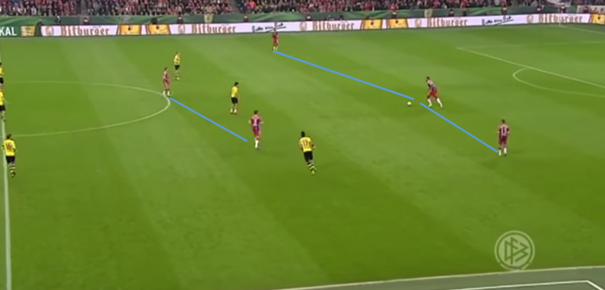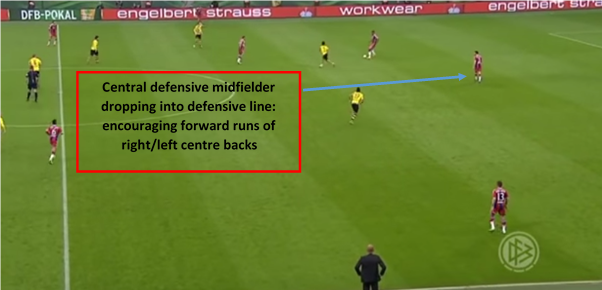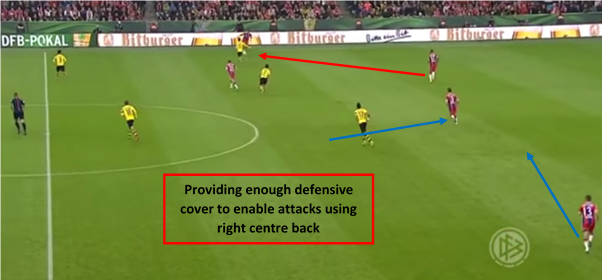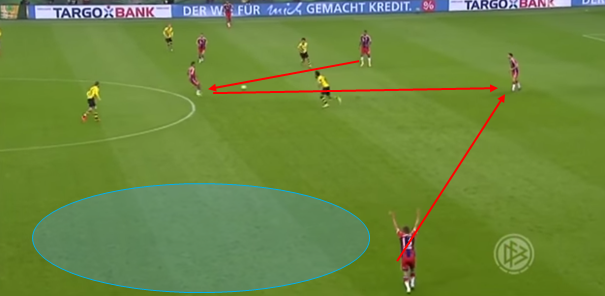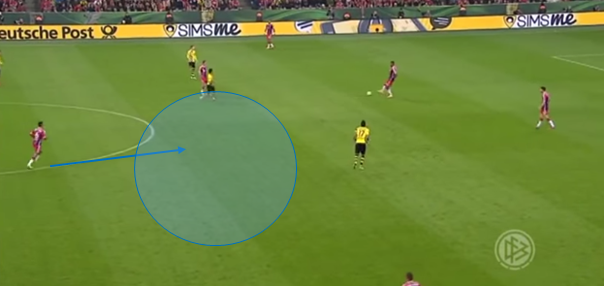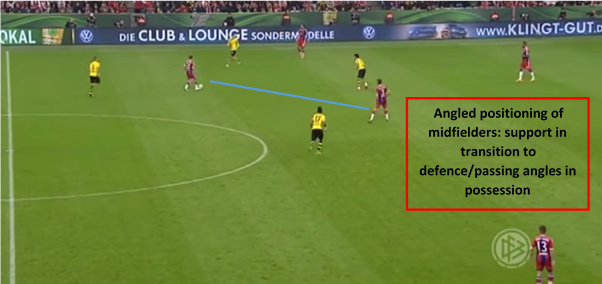By Alex Trukan
Playing with a back three gives huge advantages in midfield and forward units. It also enables the team to attack through the wings more effectively (using wingbacks) as well as create an overload in midfield. However, one of the trade-offs is playing out from the back which might be tricky and challenging. From the attacking point of view, considering that most of the teams play with two strikers, three players might not be enough to break through the first line of the opposition. Also, having transition in mind, the back three often does not provide enough defensive cover in case the ball is lost. That is why, not a back three, but defensive midfielders are crucial players in the build-up play.
Starting Positions
The middle centre back is usually the primary player to initiate build-up play. That enables the team to play three different directions: centre, right and left. Two other centre backs start quite narrow (in case the ball is lost) in the first phase and then get into wider positions as the play progresses. Defensive central midfielders are looking to receive in between opposition’s forward and midfield units to break the first line. As we can see below, they are also positioned narrow to drag opposition’s strikers towards the centre and create space in wide areas.
Converting into Back Four
As the ball is about to be played into the right/left centre back (who is now positioned wider), one of the defensive midfielders drops into the defensive line and forms a unit with middle centre back. That gives the team an opportunity to use right/left centre backs wider and higher up the pitch.
As we can see below, when the right centre back receives the ball, there is still a block of a back three in behind of the ball. Opposite side centre back (left) comes a bit deeper in case possession is lost (especially when playing against three strikers).
[wpsharely id="2988"][/wpsharely]Playing In and Out to Switch
If the team struggles to break through one side of the pitch, it is common to switch play and use opposite centre back (left on the diagram below). In order to shift opposition players towards one side, the ball can be played into central midfielder who then bounces back and centre back switches sides.
Support of Additional Midfielder
Another option includes a central midfielder (3rd) dropping into spaces around half way line in order to link up play. If the opposition is playing with three strikers up front, there are usually spaces to exploit just in behind them. That movement should be coordinated with a striker and wingers who will then go long (towards the opposition goal) in order to stretch the pitch.
Diagonal Positioning
Midfielders should aim to position themselves on the angles, what not only helps in attack by creating good support but also provides good defensive cover in case of transition to defence. Those types of movements should be made not only in relation to the other midfielders but also to full backs and centre backs in possession.
Playing out from the back with a back three poses couple of challenges to solve. Surprisingly, the players with the biggest influence on the play are not the back three but the players around them. The role of the defensive midfielders (usually two) is based around movements to support right/left centre backs forward runs, link up play in the middle third as well as providing defensive cover in case of transition. It is also important to remember about the crucial role of offensive midfielders (who often might drop back to create overload), strikers (creating space for midfielders) and wingers (stretching the opposition back line) in the build-up play.
By Alex Trukan, Development Coach, Nottingham Forest

